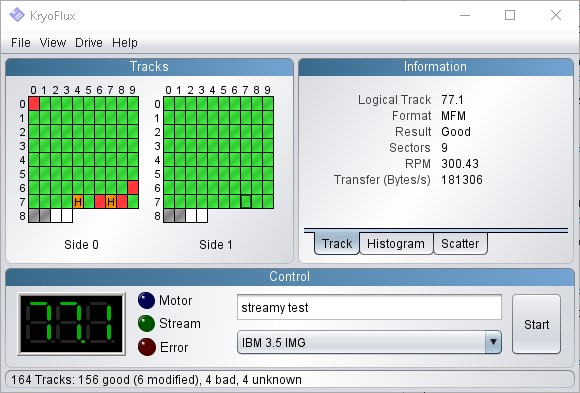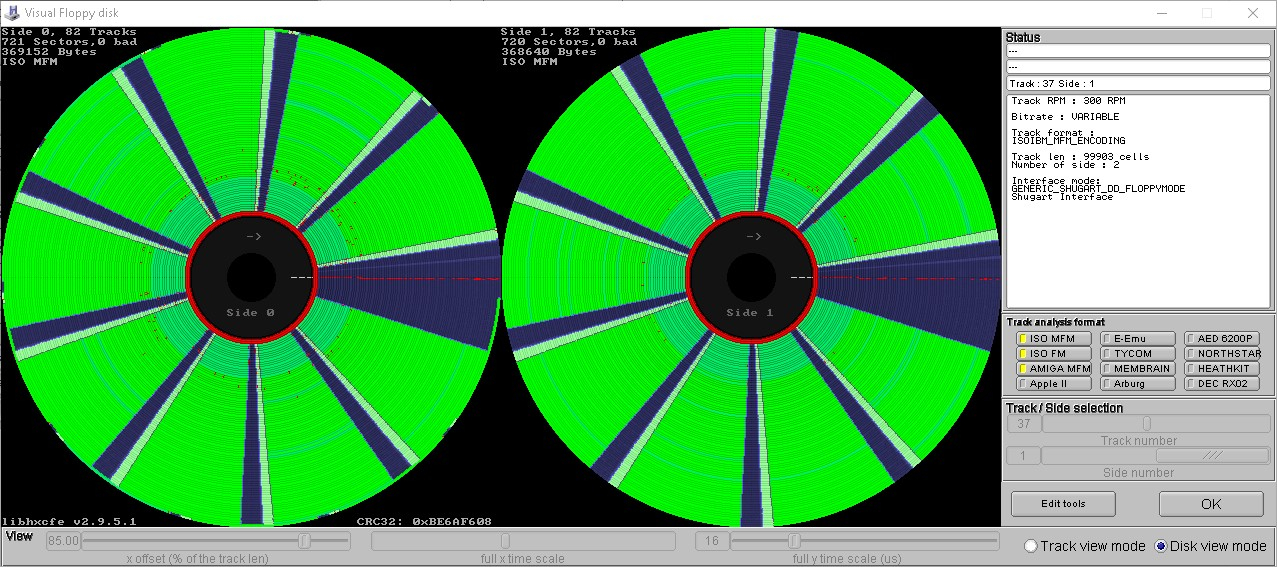Archiving floppy disk question - Kryoflux bad sectors
I'm not sure if this is the right place for this post, there doesn't seem to be a place to ask for help archiving stuff. I see some good comments on the "offers" section, but usually because something that's been offered had some issues.
I'm trying to archive a 720K DOS format floppy disk, and the kryoflux shows a bad sector at track 0 and a few others sprinkled around. It also creates absurd sector images that are about 5MB.

What's strange is that after I tried kryoflux a few times, with a few different drives, all with identical or at least VERY similar results, I tried IMD and Disk Copy Fast and those both read the floppy with no errors at all. I also tried winimage and it also gave no errors.
HxC loads the raw files and shows some red:

But it can convert to a sector image, and it seems to open just fine.
I've seen some people talk about using PCE to check for disk issues, and I can use PFI to read the flux files and convert to PRI (I think that's right?), but I'm not sure how to see if there are issues. If no errors pop up, does that mean it was happy with the raw files? Or do I have to ask it to analyze the image somehow?
I'm trying to archive a 720K DOS format floppy disk, and the kryoflux shows a bad sector at track 0 and a few others sprinkled around. It also creates absurd sector images that are about 5MB.

What's strange is that after I tried kryoflux a few times, with a few different drives, all with identical or at least VERY similar results, I tried IMD and Disk Copy Fast and those both read the floppy with no errors at all. I also tried winimage and it also gave no errors.
HxC loads the raw files and shows some red:

But it can convert to a sector image, and it seems to open just fine.
I've seen some people talk about using PCE to check for disk issues, and I can use PFI to read the flux files and convert to PRI (I think that's right?), but I'm not sure how to see if there are issues. If no errors pop up, does that mean it was happy with the raw files? Or do I have to ask it to analyze the image somehow?
Comments
Anyway, I run in to the same thing all the time. To put it simply, the Kryoflux's decoding algorithm is not as good as that in other tools.
Remember the flux streams you are sampling are the digital rise and fall of analog magnetic pulses. Therefor there will be a lot of variance and "noise". There are lots of different ways that a decoding algorithm can deal with this. Some ways are better or worse than others.
I have not seen the Kryoflux's code, but I have read that it supposedly intentionally demands a clearer flux signal to successfully decode data. The intention, I believe is that it is intended as a "preservation" tool (rather than recovery or duplicator), so it errs on the side of being "sure" it is decoding the right thing. Any questions, and it considers that an error.
The HxC tool and PCE tools take a different approach, trying to decode every last bit even if the decoded results are a little uncertain. This sometimes gives it better results, and on non-copy protected sectors you can usually verify that the decoding was successful if the sector CRC passes.
So, yes, Sometimes HxC or PCE will successfully decode an image that Kryoflux fails at. Once in a while, the reverse is true and Kryoflux decodes something that HxC or PCE fails.
As to why this happens so often, I don't really know. I've come across some disks where there is some kind of strong test pattern signal (clearly visible on unused tracks) that has been written over, but somehow still leaks and is partially visible in the track graph. The kryflux barfed all over those but the HxC and PCE tools had no problems at all.